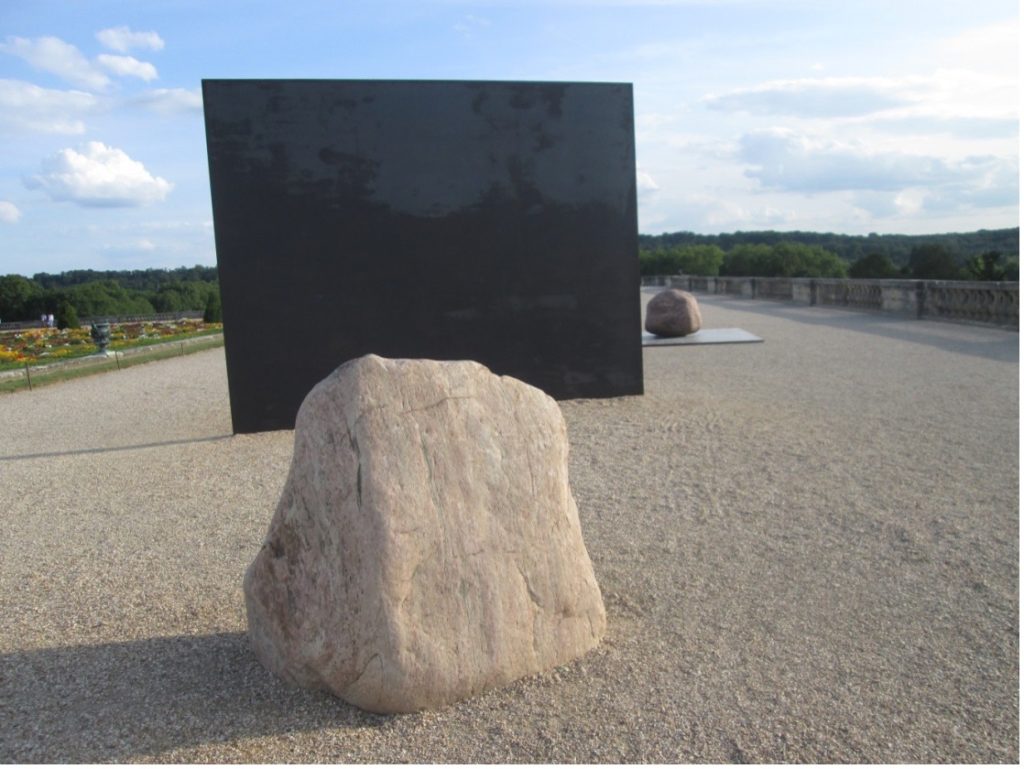A Different Way of Seeing
The gifts of hardness, of coldness, of barrier, of rigidity, of intransigence are the most difficult to see, let alone appreciate. Our Church as an institution, in fact, has been presenting them to us throughout the ages, and in doing so may have given us a most generous bequest: something against which we can react, something we can confront, something, even as we look away, can actually help us see more clearly and maybe tell us what spiritual revelation and renewal look like.
I had an experience of that kind of transformative power in May of 2014 when I visited the Gardens of Versailles, the lush, lavishly ornate palace and gardens of Louis IV and his successors, including, most famously or infamously, Marie Antoinette.
If you’ve been there, you know all the lofty words like “splendid” or “magnificent” or “glorious” do not even begin to capture the opulence of these gardens. So many flowers, so many fountains and promenades, so much expansiveness framed by so many hidden retreats, gravel walkways that lead everywhere and nowhere, sculpted figures and creatures competing with tree-arched alleyways, shady porticoes and vine-smothered pergolas vying with geometrically formal hedges, and highly cultivated “wildernesses” to capture and captivate all your senses. It was sometimes too rich for my eyes – never mind my blood – but, too late, I was enchanted.
The above description actually better reflected my first experience at the Garden of Versailles. The 2014 version was decidedly different. Scattered throughout the pathways and bucolic retreats were installations by contemporary Korean sculptor, Lee Ufan. Now, walking through a cathedral of giant trees, I would see, abruptly blocking my path, a large stark black metallic rectangle with a giant solitary boulder in front. Turning a corner edged by lush, green hedges, I would be assaulted by a huge gravel circle framed in ebony metallic fencing enclosing a series of large rough boulders on what had once been a verdant lawn. Strolling along a path bordered by a riot of red, yellow, and orange flowers to the left and more hedged gardens to the right, I would suddenly halt in front of a massive gray marble stone on which a long dark stake rested interrupting my progress. On and on it went, beauty interrupted by starkness; color by blackness, softness and vibrant life by stone cold obduracy.

And yet, how rich that juxtaposition proved to be. The massive boulders and pitch black rectangles enriched my appreciation of the blooming, organic, ever-changing life around them, and, at the same time, gave me a respite from it, the serenity that comes from simplicity, from a sense of permanence in the midst of change. Their immobility, their starkness, gave me time to contemplate, to reflect, to react – to them, yes – but also to the natural world and what it wanted from me. I could see more clearly the gifts of the lush gardens because confronting their opposite had energized me. Its cold darkness had given me warmth and light.
The gift of always having something to react against has always been important in my life. In the Catholic Church, it brought me to the work for gender justice, for universal inclusion, for church renewal, and that, in turn, brought me to an even richer sense of community and commitment and spiritual refreshment.
I was reading a portrait of the writer, Marilynne Robinson, in the October 5, 2020 New Yorker. The author quoted from Robinson’s latest book, Jack,and says this about Jack’s own perceived fall from the Garden of Eden: “Too often, he now thinks, we attend to only ‘half of the primal catastrophe,’ focusing on what was lost in the garden while forgetting what was gained. But, Robinson insists, ‘guilt and grace met together,’ for in eating from the tree of knowledge we did not only learn about evil. We also learned about goodness.”


One Response
How can we foster discernment about the ordination of women during the 2021-2023 synodal process?